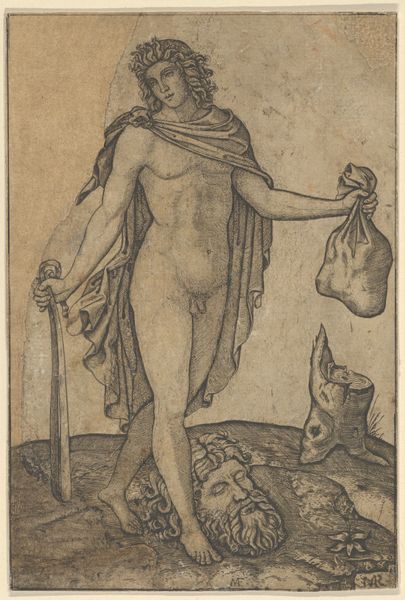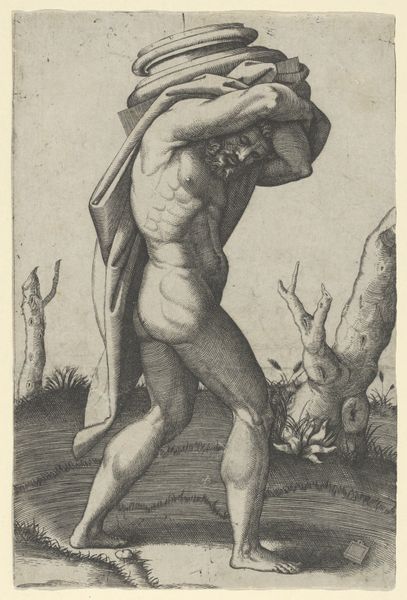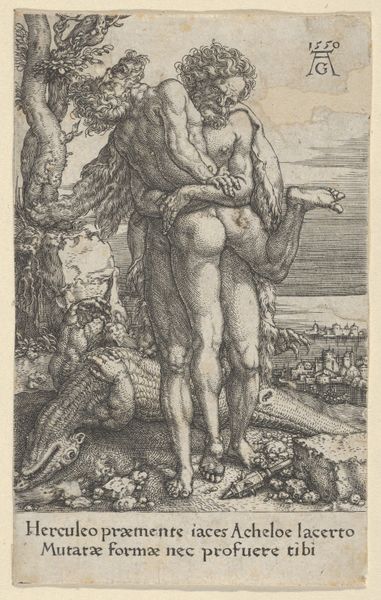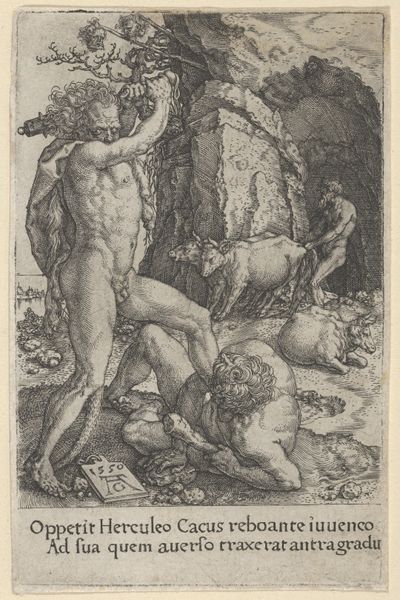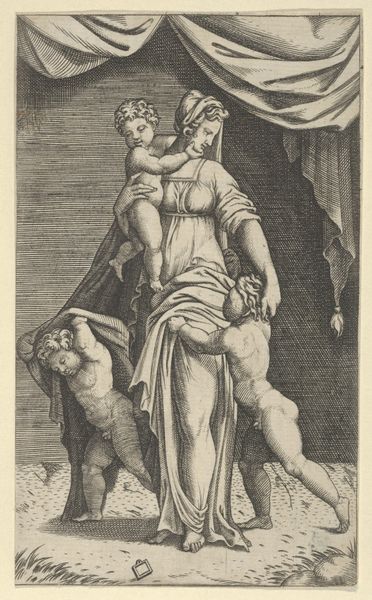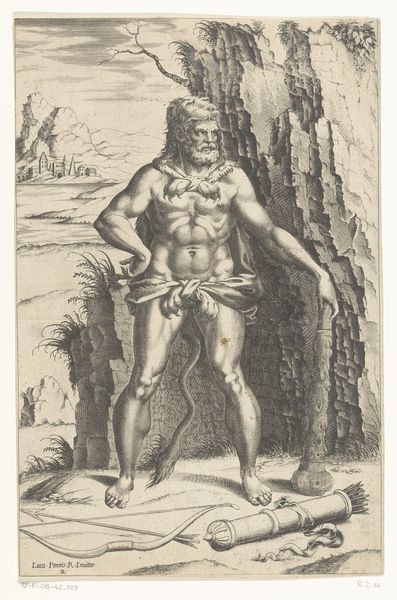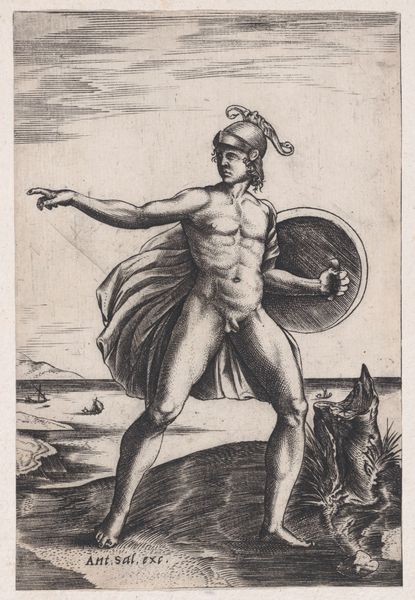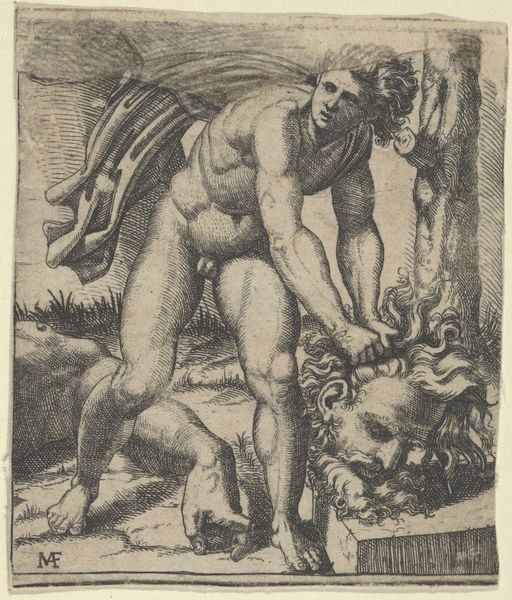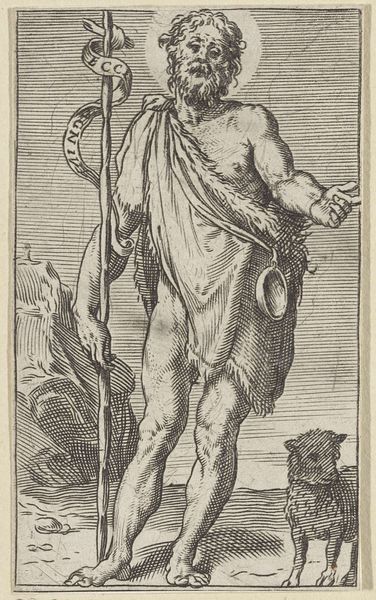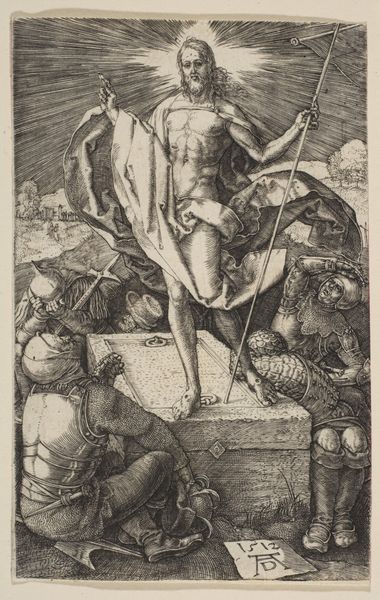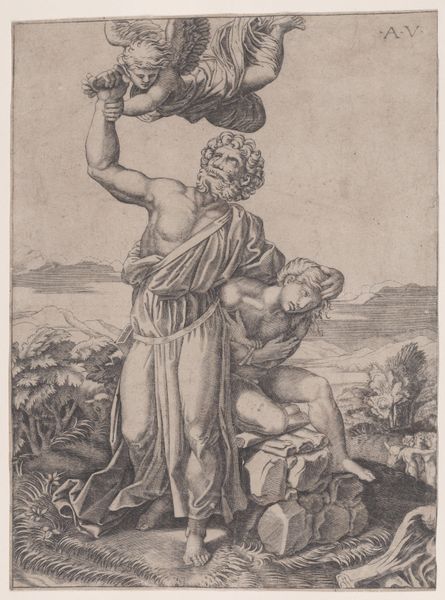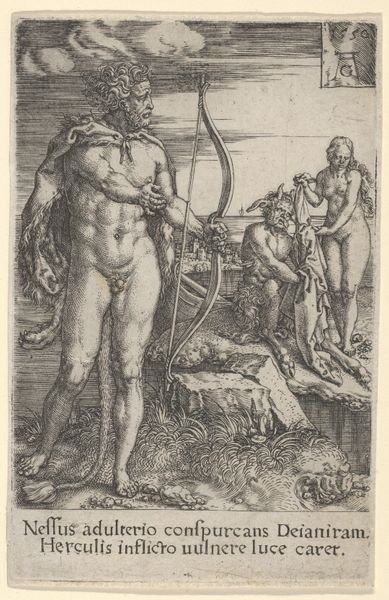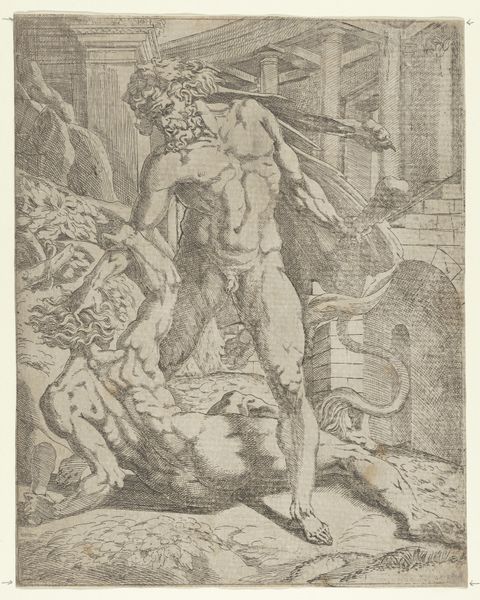
David standing, sword in lowered right hand, sack in the left, the head of Goliath on the ground beneath him 1500 - 1534
0:00
0:00
drawing, print, engraving
#
drawing
#
head
# print
#
old engraving style
#
figuration
#
portrait drawing
#
history-painting
#
italian-renaissance
#
nude
#
engraving
#
sword
Dimensions: 6 3/4 x 4 1/4 in. (17.2 x 10.8 cm)
Copyright: Public Domain
Curator: Here we have "David standing, sword in lowered right hand, sack in the left, the head of Goliath on the ground beneath him," an engraving by Marcantonio Raimondi, dating from around 1500 to 1534. Editor: There's an immediate unsettling duality to this piece. The graceful, almost nonchalant pose of David juxtaposed with the severed head beneath his foot creates a jarring visual contrast. It provokes questions about power and its visual representation. Curator: The symbolism here is layered. David, nude, recalls classical heroes, yet his victory signifies not just physical triumph but the ascendancy of the marginalized. It speaks to a radical disruption of power dynamics and prevailing narratives of dominance, with overt biblical, social, and political tones. Editor: Note the sword, lowered yet present—a constant reminder of the force that brought about this shift. The bag, presumably holding Goliath’s head, isn't hidden; it is part of the open display. And what about the head itself? It is passive, no longer dangerous. This alludes to victory over internal demons as well. Curator: Raimondi, working within the Italian Renaissance, likely understood the charged nature of these images. By choosing to depict David in this specific way, naked, seemingly relaxed after the battle, he touches upon ideals of civic virtue. It is complex in its suggestion of moral purity in its own narrative. Editor: Exactly. The deliberate use of nudity invites scrutiny about heroism, masculinity, and morality. This print isn’t just a rendering of a biblical scene; it’s a reflection on what constitutes righteousness and justice in a fractured world. Curator: His stance, relaxed and dominating the space, also seems carefully calibrated. I am not fully convinced of it’s being accidental. Editor: Accidents of medium do not accidents of meaning make. Curator: Absolutely. What this piece really encourages us to consider is the unsettling reality that victories, even righteous ones, are often built on foundations of violence. Editor: And this work prompts reflection about these continuities of history, morality, and representation itself.
Comments
No comments
Be the first to comment and join the conversation on the ultimate creative platform.
